Anesthetic apparatus: types, characteristics. Modern medical equipment
Sometimes a person faces serious problems with his health, when the most effective method of treatment is surgical intervention. It is impossible to perform an operation on any organ without anesthesia, otherwise the patient will experience terrible pain, which in the end can cost him his life. There are several types of anesthesia, but the deepest and longest are given with the help of special equipment. An anesthesia device, namely it is the main device present in the operating room, will allow the patient to quickly make a general anesthesia, during which any intervention is carried out. But what is this device?
Anesthetic device: what is this device?
Anesthesia machine is a medical device that is intended to provide general anesthesia. This device can be called an anesthetic maintenance system. If in the distant past the functionality of these devices was reduced to the fact that the supply of inhalation anesthetics and gases for life support in the patient circuit, then modern medical equipment provides more opportunities. It not only can supply oxygen and inhalation anesthetics in the form of gas or liquid, but also perform a comprehensive monitoring of the vital signs:
- pressure in the respiratory tract;
- flow and oxygen concentration;
- automatic artificial ventilation of the patient's lungs.
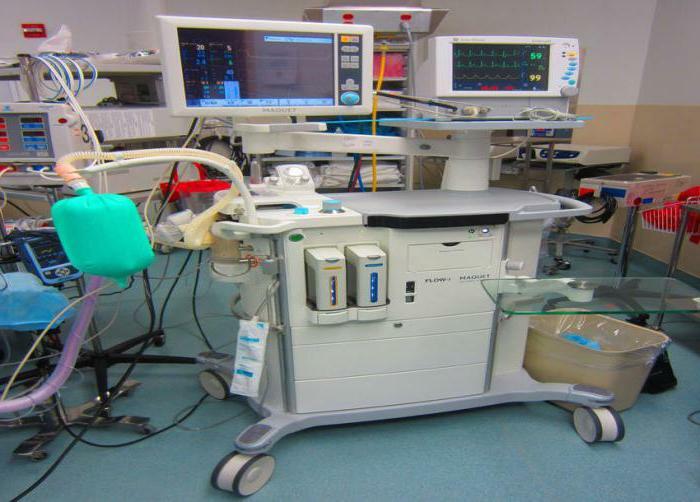
In view of the fact that it is necessary to conduct complicated operations with the use of general anesthesia, in addition, it is important to carry out artificial ventilation. During operation, the modern apparatus for a certain period of time replaces the functions of the respiratory muscles of the human body, oxygenation and ventilation are provided. To provide anesthesia, an endotracheal tube or an anesthetic mask is used.
In addition, this device allows you to control the volume and pressure, but the methods can be different, for example, it can be auxiliary or controlled ventilation, pressure, controlled or supported, and many other functions.
Where is the anesthesia machine used?
Anesthetic and respiratory apparatus is used not only for surgical interventions, but also during the therapy of various severe pathologies in which the most important body functions are disrupted:
- acute heart failure;
- malfunctioning of the airways: pneumonia, asthma, swelling of the lungs;
- shock;
- coma;
- convulsive conditions of various etiologies;
- severe injuries and burns;
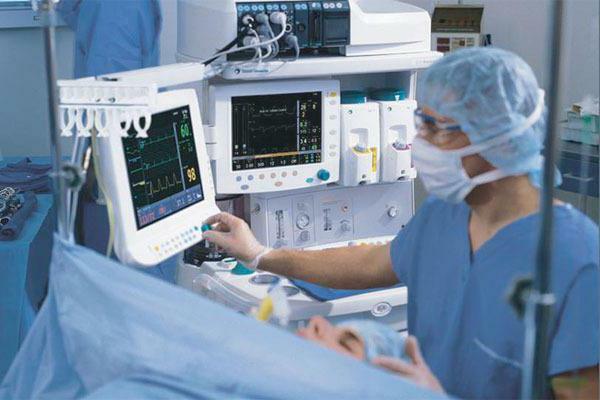
- infectious diseases, especially botulism, tetanus and others;
- acute forms of poisoning.
The modular anesthesia system has several modes of operation:
- provides a positive pressure that is continuously supplied;
- positive pressure, but it is fed in two levels;The
- combines the two functions described above.
Types of devices for the anesthesia
At present, a huge number of devices have appeared that not only help surgeons, when general anesthesia( anesthesia) is needed, but also for doctors who have to treat patients with complex pathologies.
In order to help doctors in the treatment, manufacturers offer several types of instruments:
- floor;
- wall mounted;
- portable.
Floor models are equipped with a locking system and wheel supports, which made it possible to make them as convenient as possible under stationary conditions.
Wall variants are most often used for the equipping of helicopters for ambulances, ambulances or ambulances of a modern design.
Portable or modular designed to equip emergency workers and emergency workers with the most necessary and non-cumbersome equipment that will help in any place to help the patient with any degree of severity of the disease. 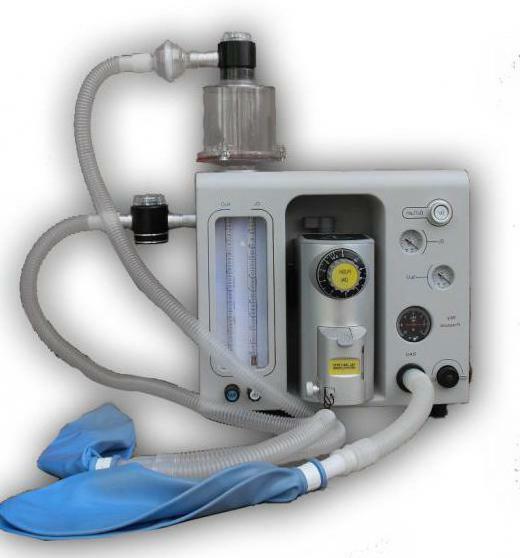
In addition, the modular instruments are additionally equipped with batteries that help the device in any conditions to work for several hours without interruption. Also, all the devices may vary depending on for which category of patients are intended. For example, for children such devices are called neonatal and have a number of additional functions. The
Principle of the Anesthesia Device
Anesthesia works on the principle of injection. They help to supply a patient with a volume of anesthetics in the form of a gas connected to oxygen, or only one oxygen. Everything depends on the situation: it is necessary to perform an operation or resuscitation, it is necessary to take into account the age of the patient, his weight, as well as the attendant ailments.
Ventilation is carried out with positive pressure at the end of exhalation 5-10-15 cm of water column, but the indications are taken into account. It is possible to carry out artificial ventilation of the lungs for several hours, and sometimes days or years. There are also high-frequency devices. They come in several forms: volumetric, inkjet and oscillatory.
Inkjet device is most often used, and it delivers a number of respiratory cycles in the range of 100-300 per minute. Thus, it is possible to reduce the burden on the heart, improve blood flow and gas exchange in the lungs. Use of ventilation is possible in parallel with conventional ventilation.
Technical specifications of anesthesia devices
There is no better equipment in which several sciences( surgery, anesthesiology and intensive care) are combined together than an anesthesia machine. Such devices have been used for a long time, but modern devices are distinguished by a variety of functions and help even in the most severe cases. Modern complexes consist of such systems:
- of high pressure;
- dosimeter;
- evaporator anesthetics in liquid form;
- built-in ventilation, which has several operating modes;
- breathing circuit with absorbent;
- display for process monitoring;
- aspirator;
- humidifier respiratory mixture.
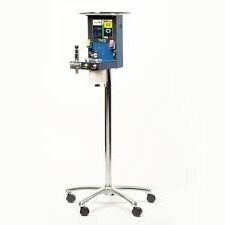
The dosimeter and the evaporator are necessary in order to accurately adjust the dosage of the drug. In most cases, a rotary type is used, where the flow rate of the mixture is set using a float. The evaporator is a special container, it is it that transforms the liquid anesthetic into steam.
The respiratory unit is used in the same way as manual ventilator and as a storage device for narcotics.
Features of anesthetic devices
Today, anesthesiology and resuscitation have gone far ahead. All due to the fact that modern equipment allows in a short time to assist patients with severe pathologies. Most often, medical institutions use effective and economical anesthesia. They have a prefabricated structure, which makes it possible to pick up modules from those or other needs of a specialist and the specifics of the operation.
In addition, each existing anesthesia machine has its own differences:
- Type of anesthetic fan. And there are two of them: pneumatic and electric, and in some models there is no fan at all.
- Rotameter: mechanical or electronic.
- A variety of gas use: air, oxygen, nitrous oxide, xenon and others.
- Possibility or inability to use low flow anesthesia.
- The amount of time that the device can operate autonomously.
- Dimensions.
- Differences depending on the age of the patient.
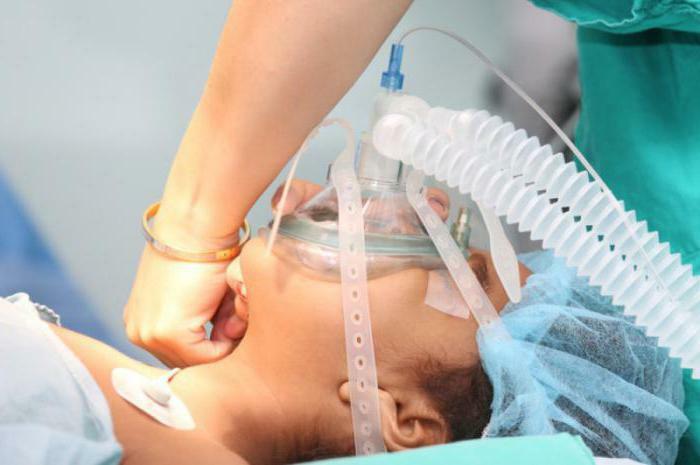
Another important difference lies in the convenience of disinfection of equipment. Manufacturers produce models that require the disinfection of the breathing circuit, and there are those where such difficulties are not required.
But to accurately understand the characteristics of anesthesia machines, you need to consider some of the most popular species.
The device for anesthesia "Polinarkon"
This device is from the domestic manufacturer, it is considered one of the most popular. To date, many doctors have given good reviews about this device, because it helps to provide breathing to a patient on one of 4 circuits. They perfectly integrate with devices that provide artificial ventilation, but they are best compared with such devices: PO-5 or 6, PHASE-5, which in the end makes it possible to optimally adjust and constantly monitor the volume of the lungs. Such models are affordable.
Ancillary apparatus Fabius Plus
This device from the German manufacturer "Dreger" is very popular. Those who had already tried it in their work were satisfied. This device is equipped with an E-vent fan, which provides several ventilation modes:
- manual / spontaneous;
- control volume;
- with constant pressure control;
- with pressure support;
- synchronized additional ventilation.
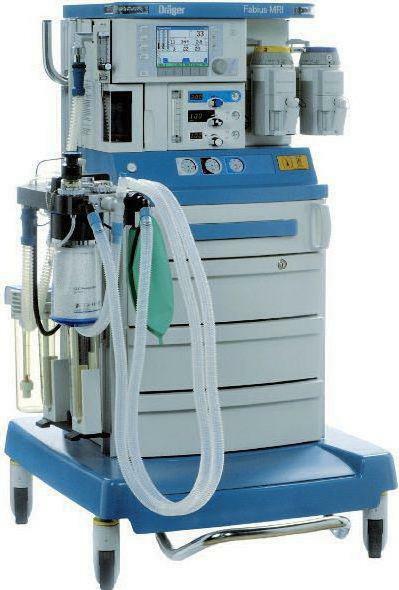
The "Draeger Fabius" Anesthetic Device is an electric drive with a piston and electronically controlled. In the kit there is a battery, and it works autonomously for more than 45 minutes. This device has a very simple and understandable interface.
Technical characteristics of "Fabius"
To accurately understand the advantages of this device, it is better to specify its functions:
- continuous monitoring of O2 concentration at inspiration;
- constant monitoring of respiratory frequency and minute volume;
- monitoring without interruption of peak pressure in the respiratory tract;
- pressure plateau.
To say how this device differs from many others, it is necessary to determine its distinctive features:
- it is equipped with a color display, which displays digital and graphic parameters;
- has a reliable and safe system of mechanical rotors;
- it is possible to simultaneously fix two evaporators of inhalation anesthetics;
- it is mobile, therefore it is easy for the doctor to organize to itself optimum working space;
- is a convenient pedestal base, on which you can also arrange other types of equipment.
But no matter how the device is given anesthesia, every patient should know that it can harm the body.
General anesthesia: consequences for the body
Although anesthesia has been introduced correctly and a professional anesthesiologist, it must be remembered that its administration entails some possible consequences, among which:
- hypotension;
- gag reflex;
- arrhythmia;
- cerebral edema;
- asphyxiation;
- complications in the pulmonary system;
- inflammatory processes;
- kidney failure;
- malfunctions in the circulatory system providing the brain.
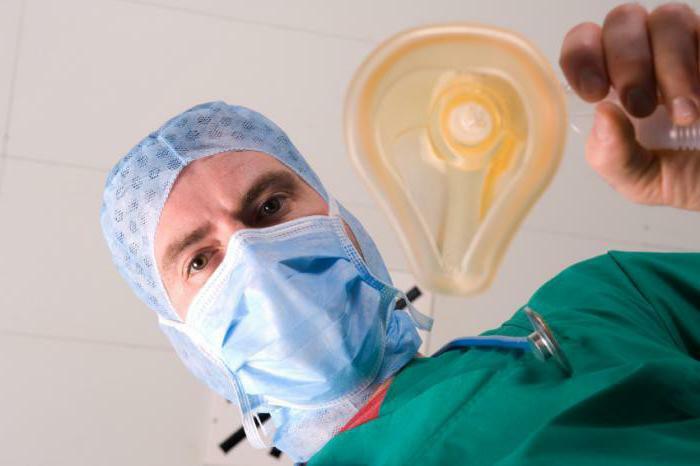
The same patients who were given general anesthesia, the consequences for the body describe this: scattered attention, partial loss of memory, speech problems. Some patients have mild irritability, irritability, nervousness, insomnia.
Especially narcosis has a strong effect on children, women bearing babies, and the elderly.
Reviews of doctors
Anesthetic apparatus in its practice is not once used by surgeons, anesthesiologists and resuscitators. According to their feedback, the devices that were equipped with operating systems in the far Soviet times were not effective and practical. But at the present time, when innovations do not stand still, everything has changed dramatically, modern devices have a lot of advantages, so that doctors can help even seriously ill people. With their help, it was possible to reduce the mortality of seriously ill patients.
Conclusion
Summing up, you can say for sure that modern devices of any type are effective devices that help not only to quickly give anesthesia to a person, but also to support the vital activity of some organs. In addition, with their help, the anesthesiologist can choose the optimal dose for a particular patient. Anesthesia apparatus of any type can be used only by qualified specialists, in a hospital or mobile rescue teams on the road.
